

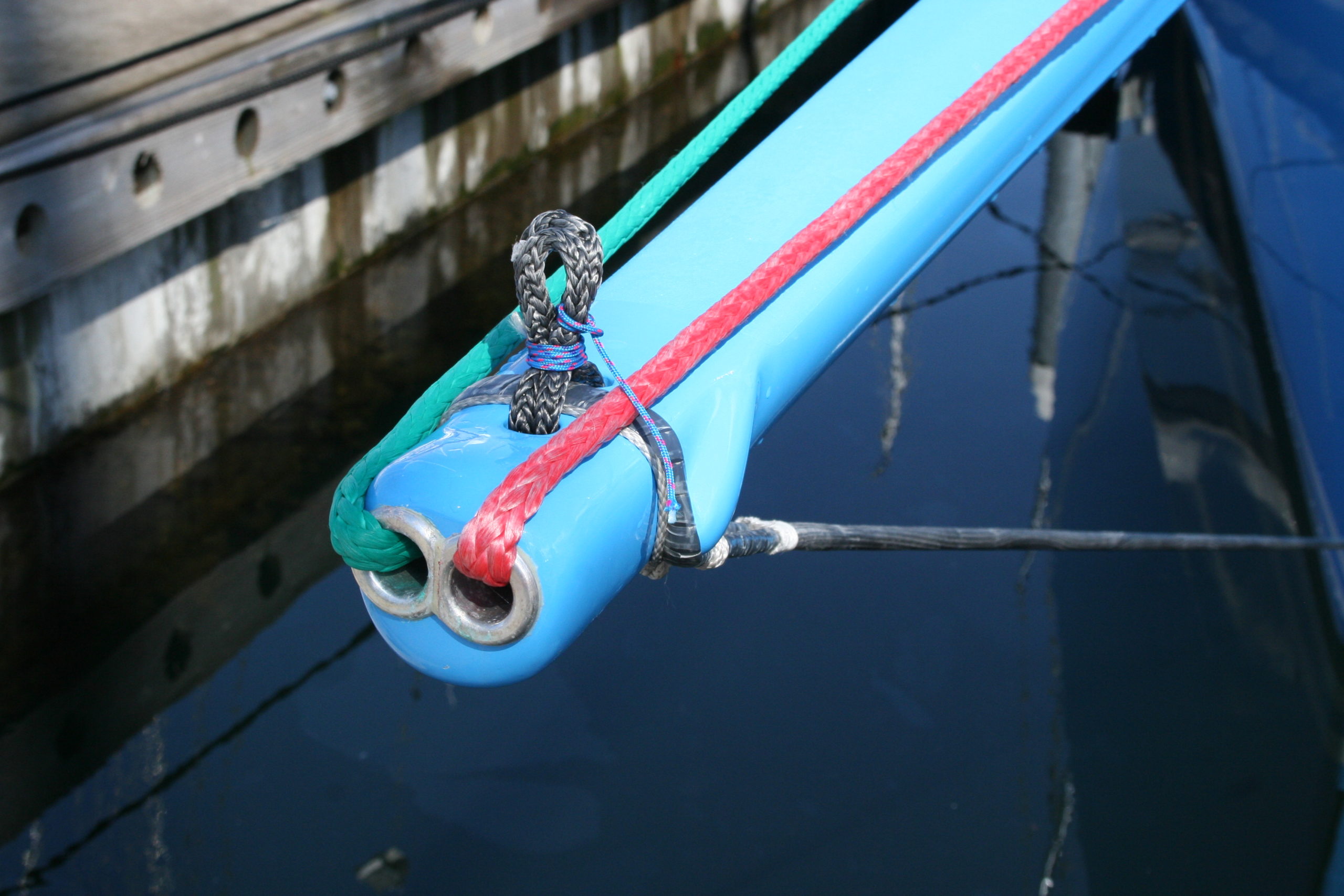
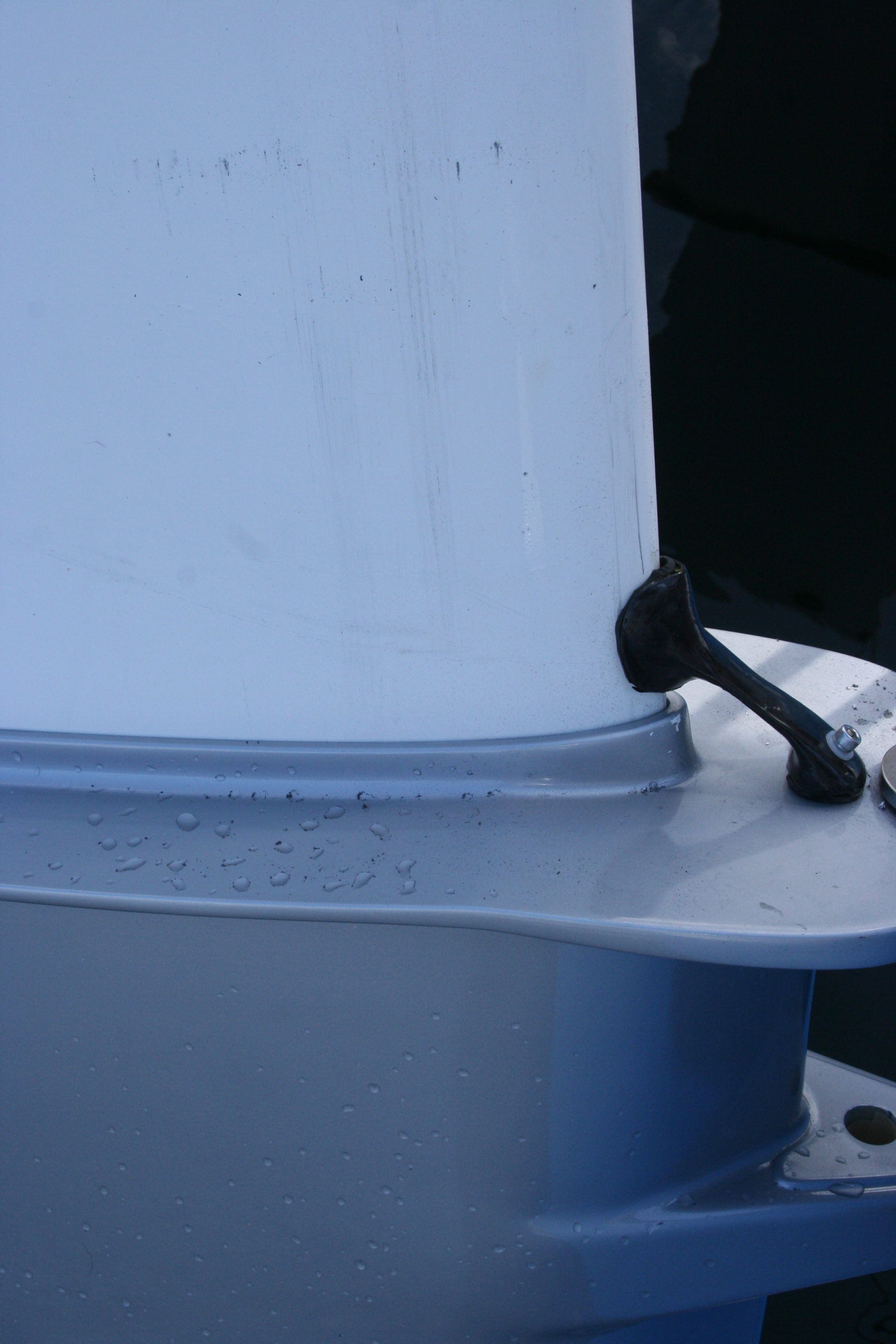

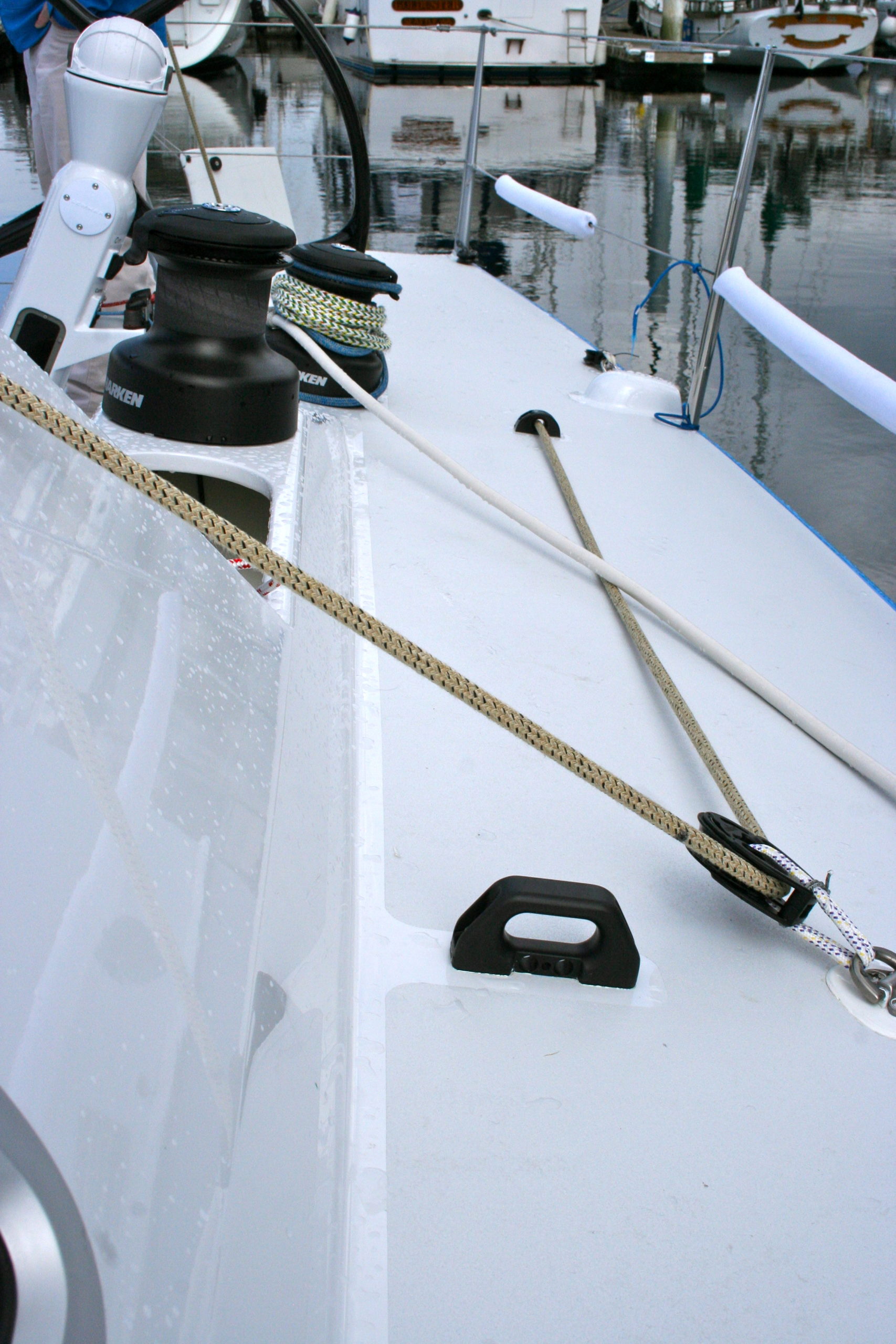
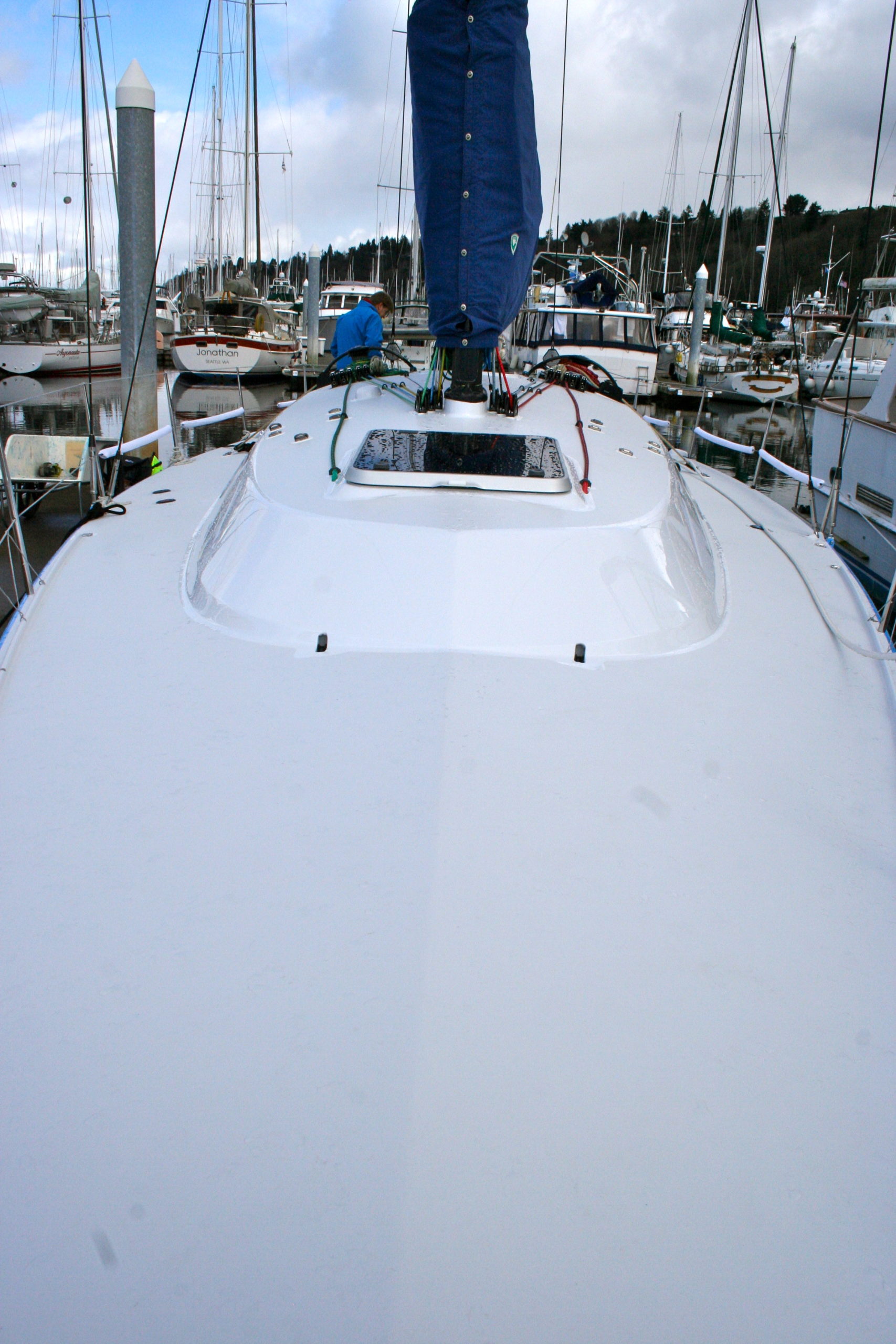
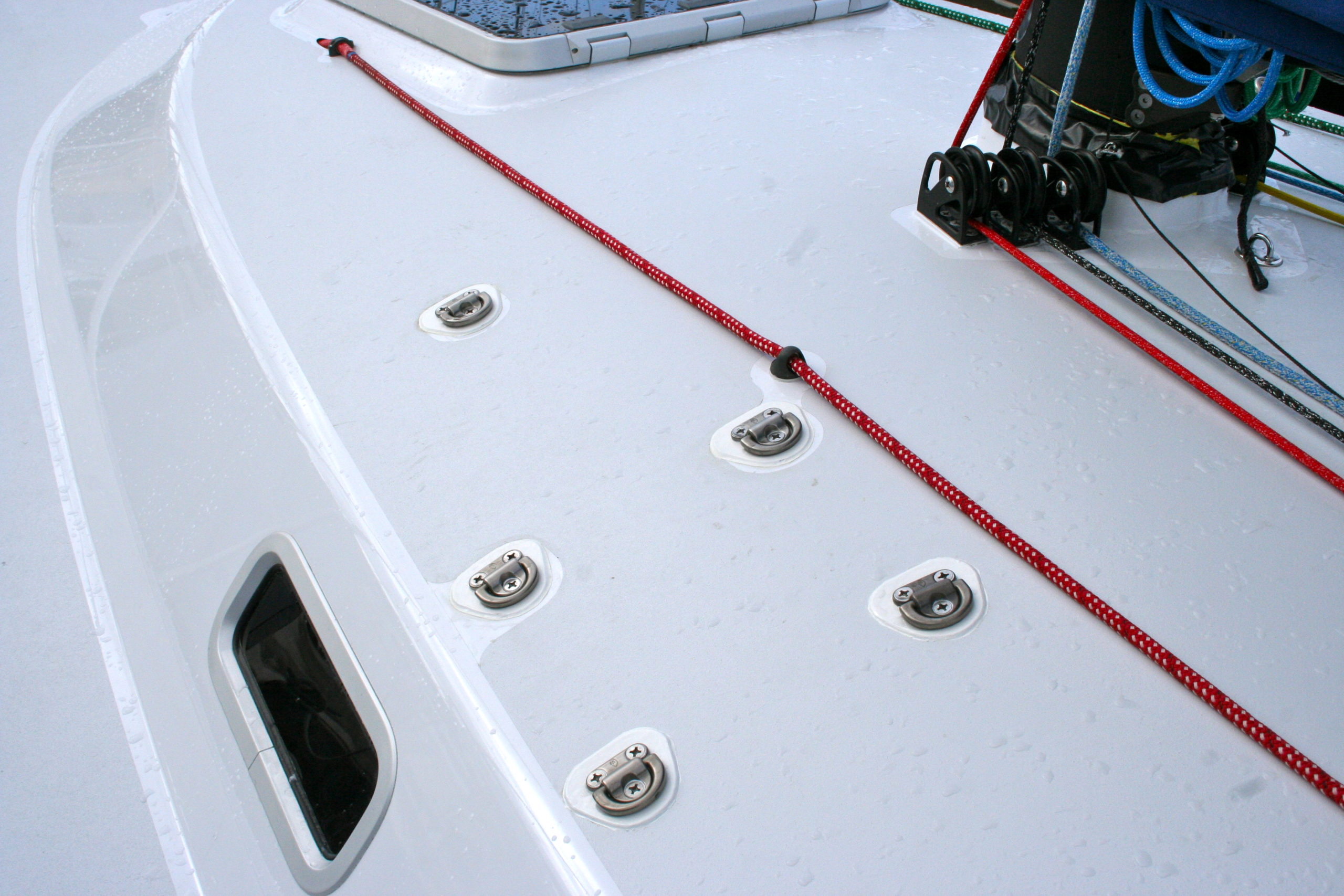

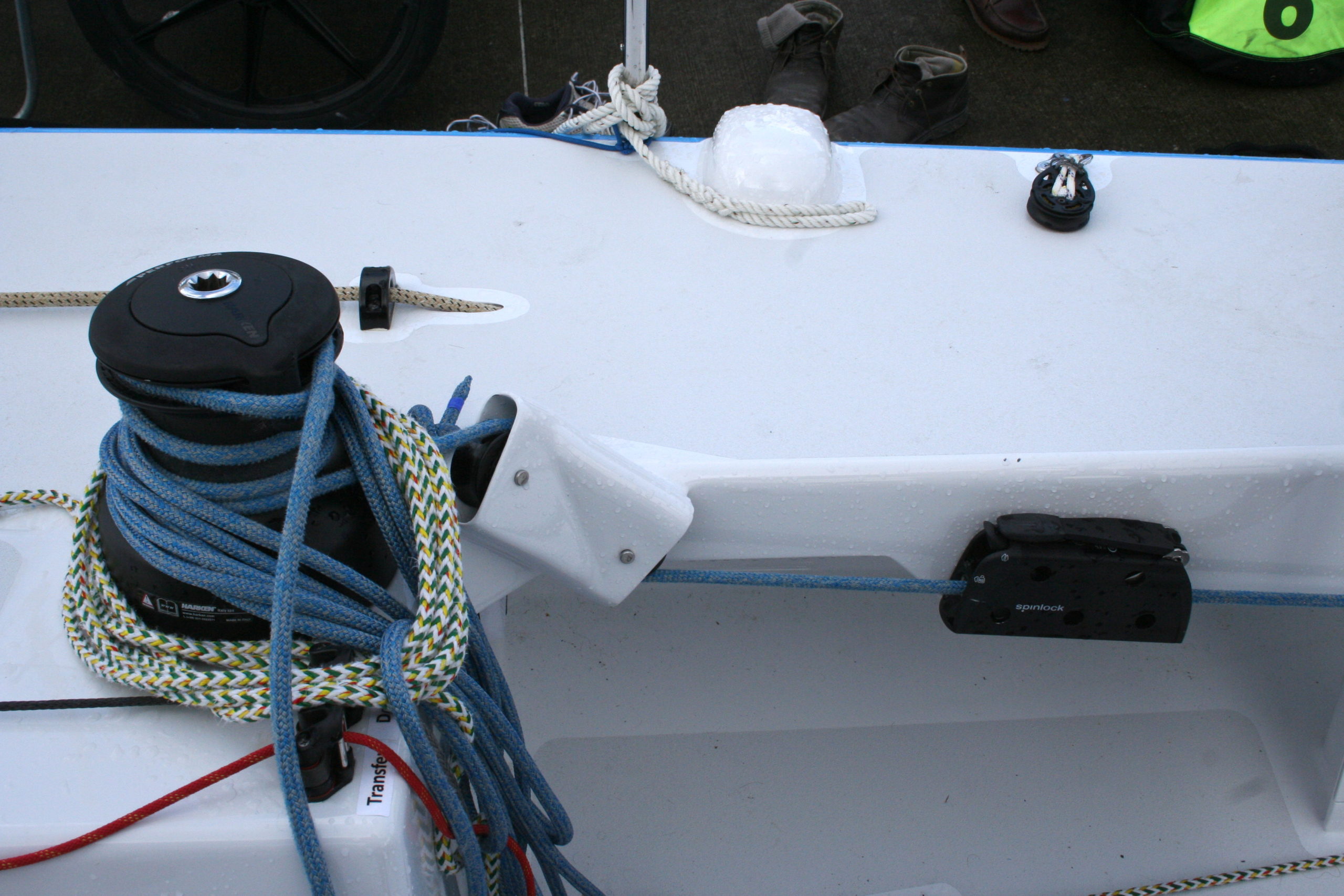
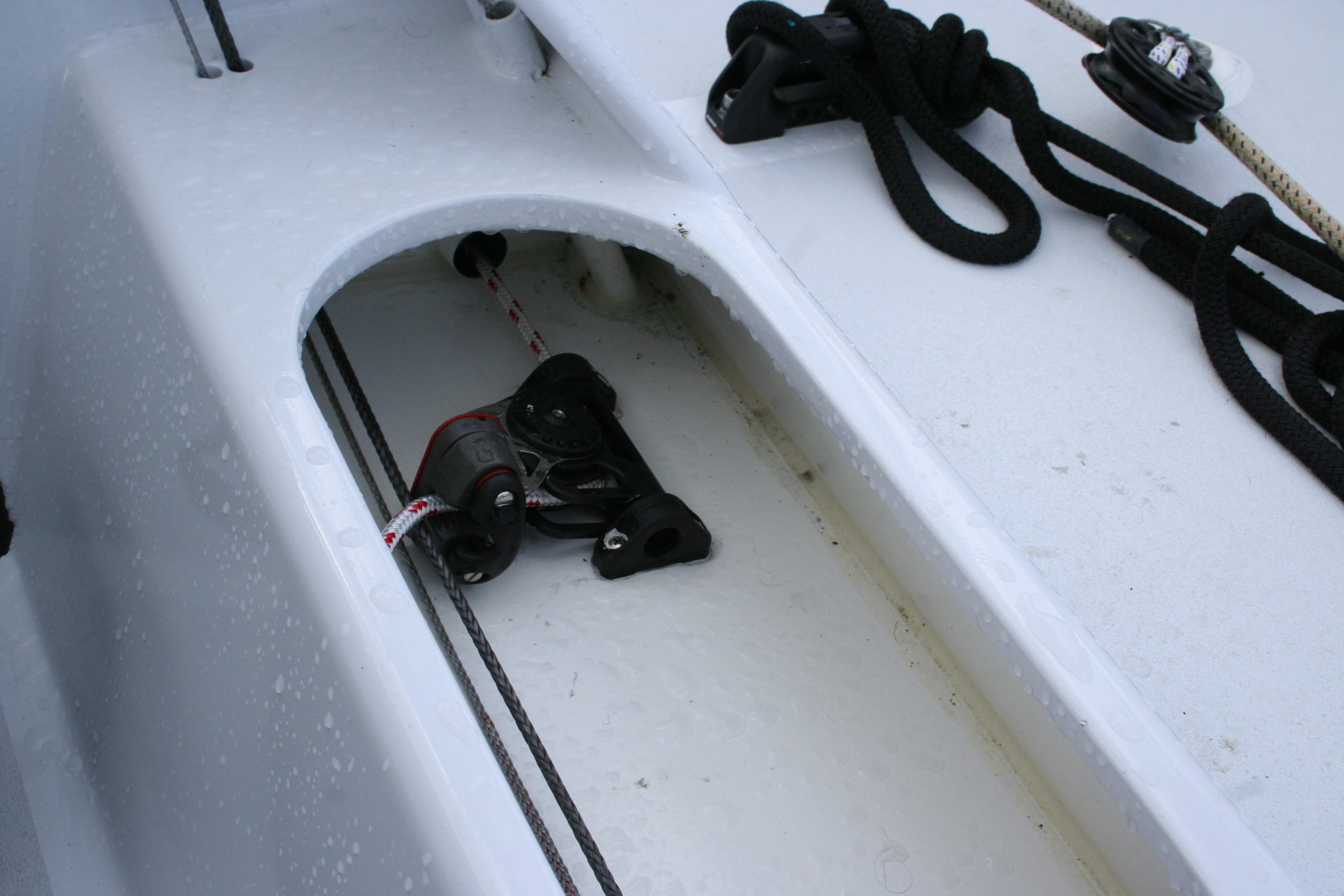
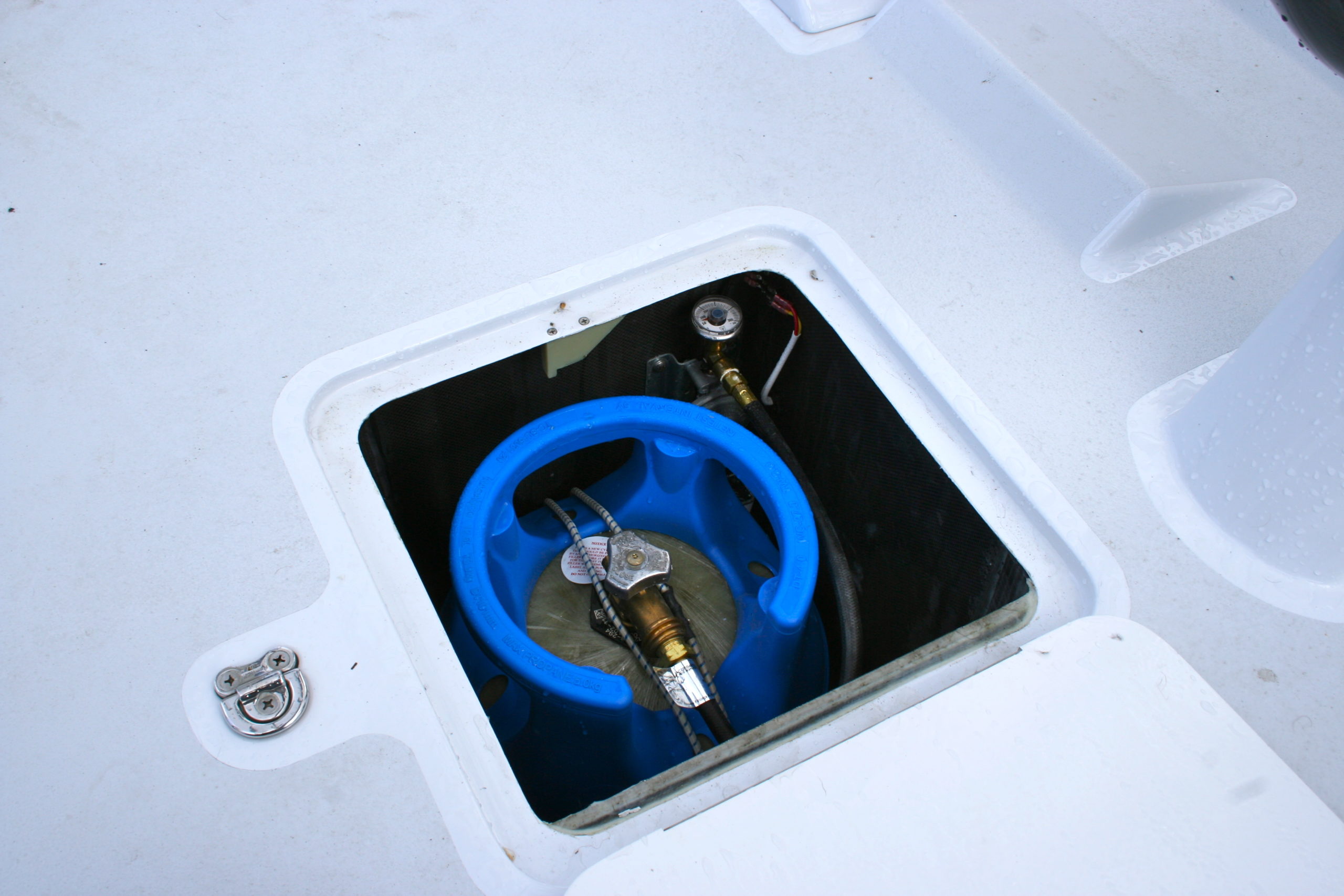
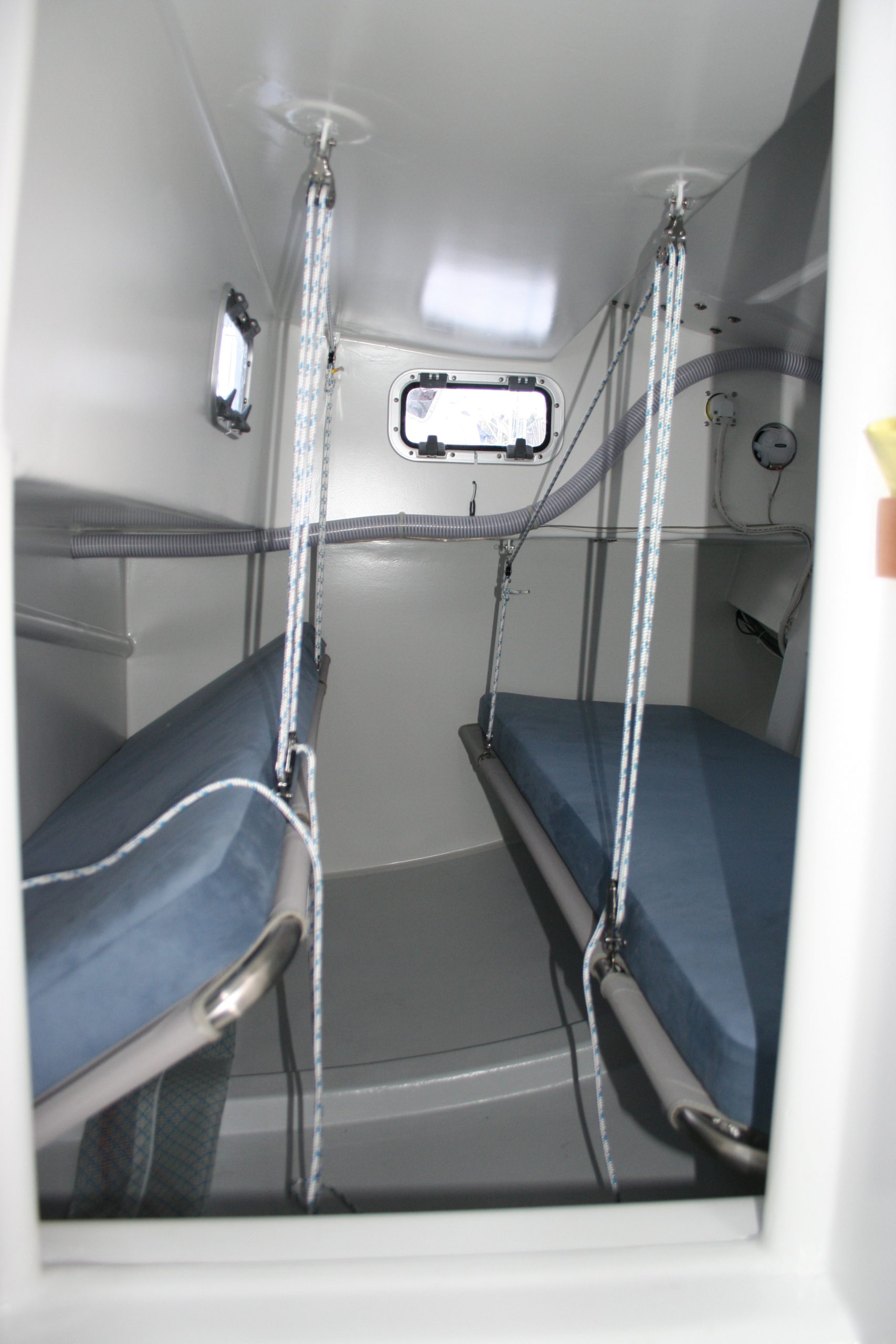
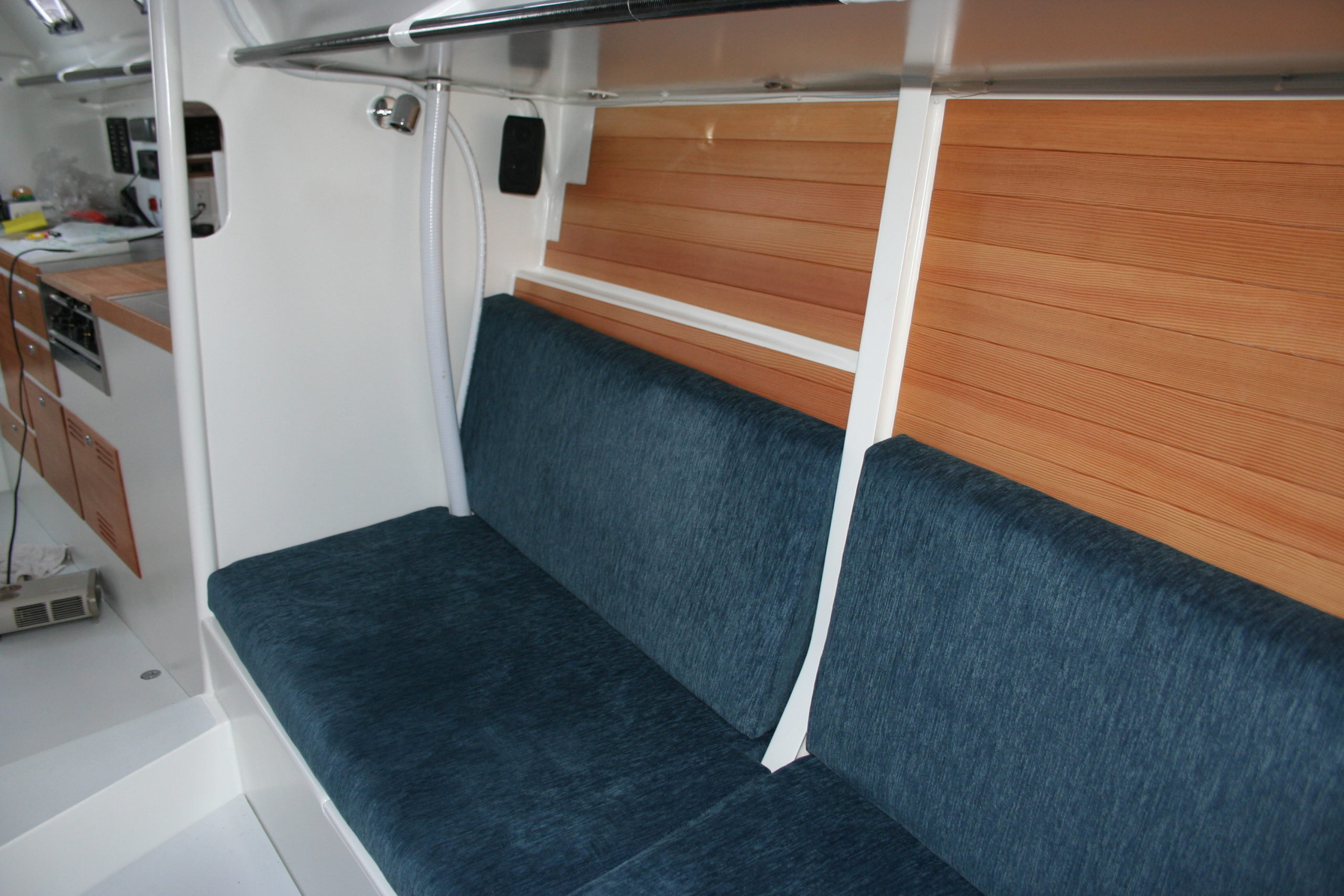
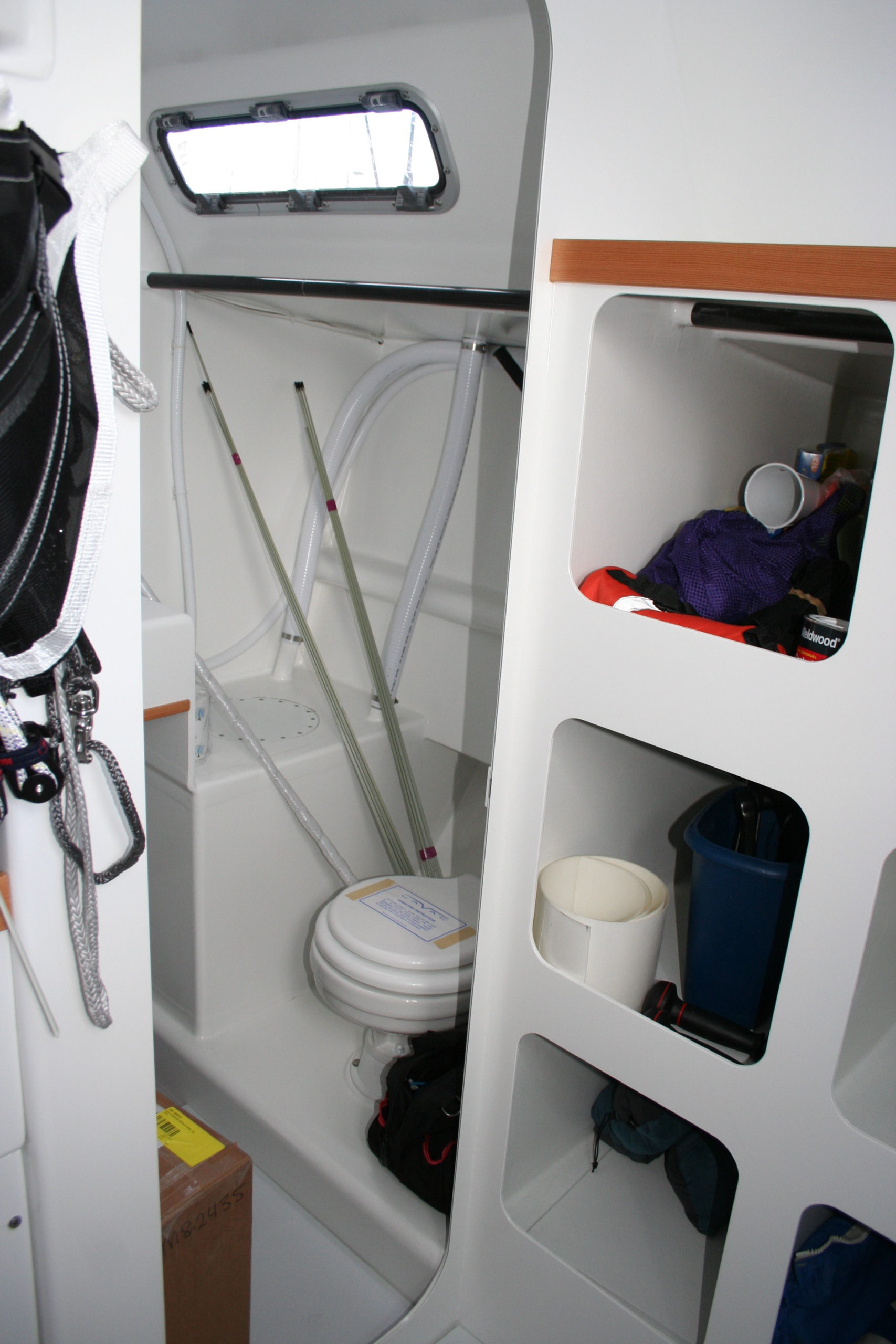
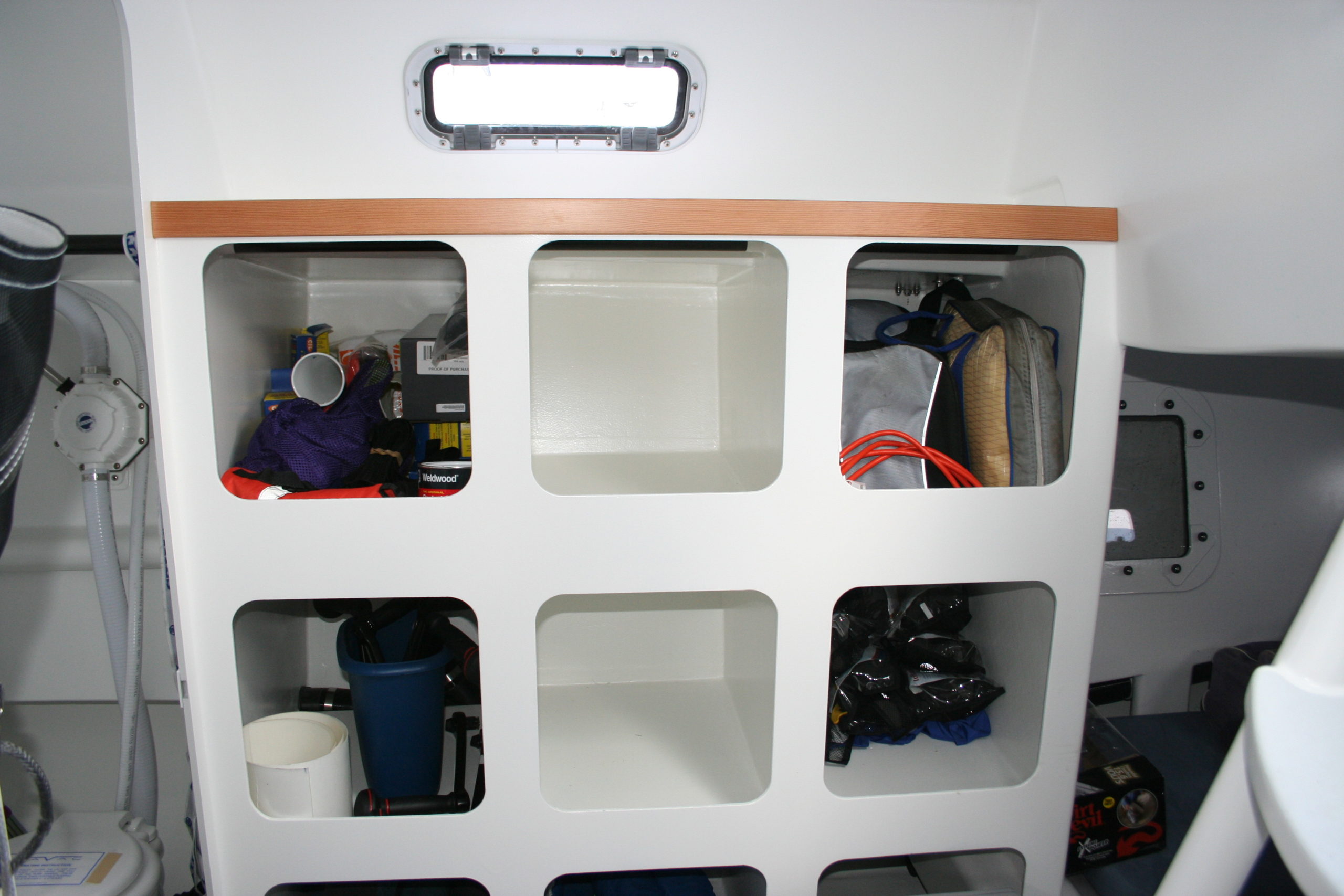

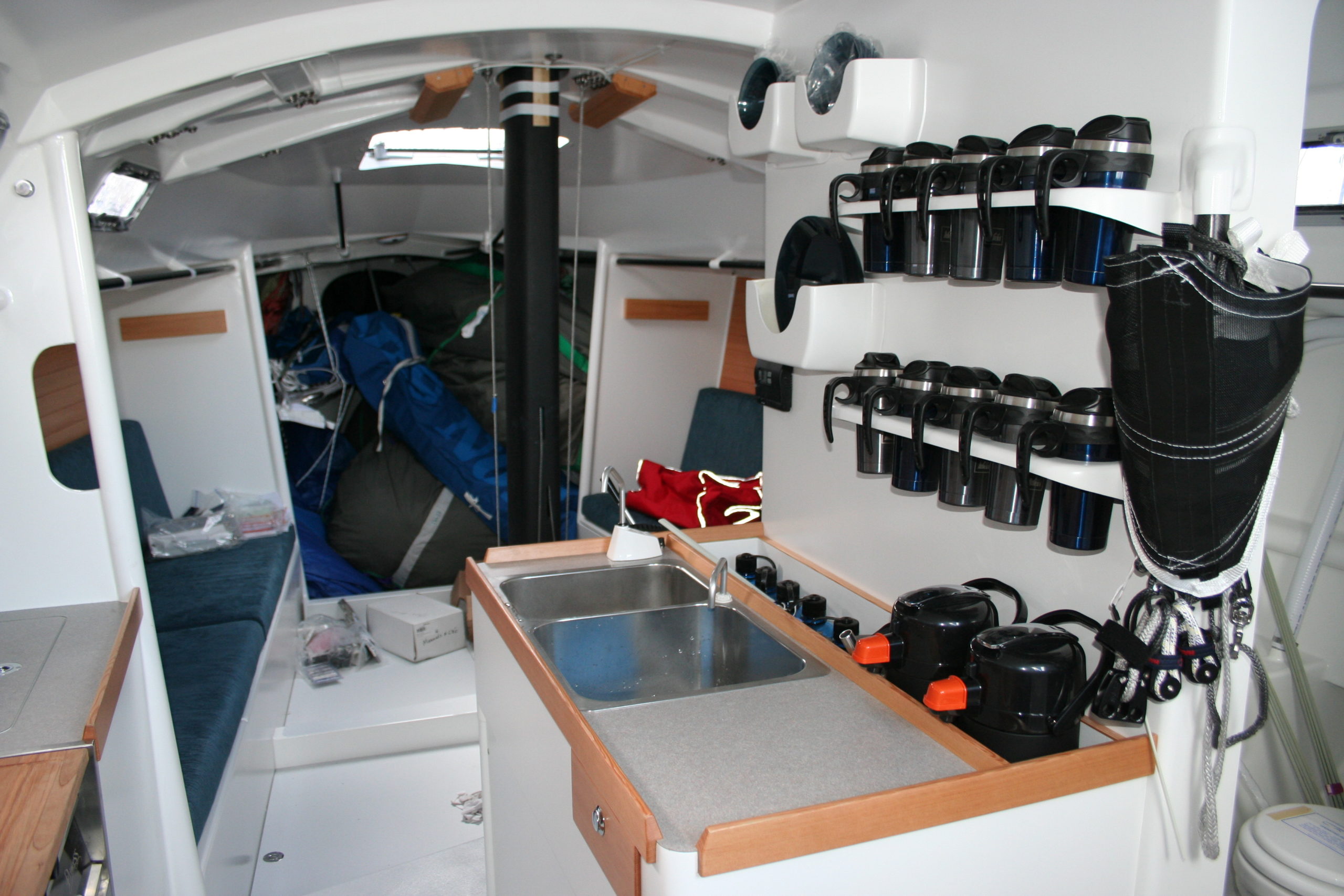
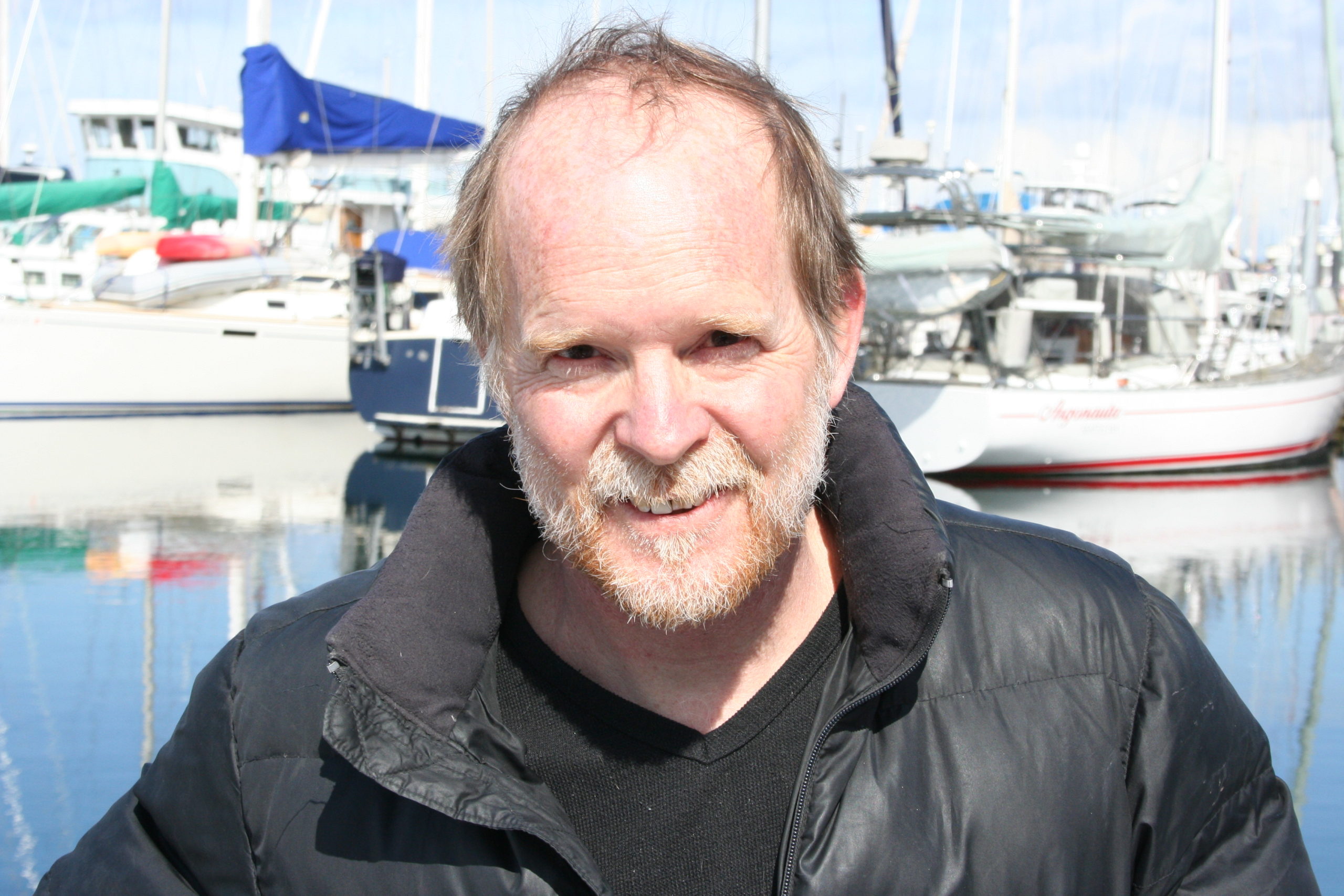
Today I had a chance poke around the new Bieker 41 Blue and chat with Paul Bieker about the boat while he added yet another innovative, simple gizmo to the steering system.
While you look at this, bear in mind she’s already hit 22.8 knots in one of her test sails.
What a great boat. To me she’s an emphatic statement that new technology is not just compatible with the racer-cruiser ideal, but in fact could be key to making that long forgotten staple appealing once again.
Those familiar with Bieker won’t be surprised by too much. Blue has a big fractional rig with a squaretop main. She has the typical powerful, wide aft sections. Water ballast will make her motor upwind and unloading it will make her scream downwind. “She actually has a very narrow beam waterline,” Bieker explains, “and I’ve made the forward sections a little fuller.”
But one of the things you come to know about Bieker is that he’s always thinking about a better (simpler, stronger, lighter) way to do things. Whether he’s coming up with it himself, borrowing it from someone else or some combination of the two, his designs are full of his little touches. A pattern of padeyes takes the place of track. The deck is clear, with the jib cunningham and spinnaker tack lines led out of sight. Everything seems intuitive and simple. It looks dead simple to sail or even race without a gang of pros onboard.
Another thing you come to know about Bieker is that he builds a lot of the little bits and pieces himself, in the shop in his house. And he’s every bit as proud of what he creates with his hands as he is of what he creates with his computer. Today he was putting a nifty, simple carbon brake to hold a rudder up when it’s pulled clear of the water.
The widest part of the interior features a console. And while it divides the boat in an unusual way, it allows that central area to house the ample galley to port and the head to starboard. The galley sink is on centerline. Aft are four pipe berths and forward of the galley and head is a seating area where an entire crew could hang out. It’s not a Cruiseahome, but for races like the 333-mile Chicago Mackinac those amenities will be much appreciated. And it is completely cruiseable, though I’m pretty sure I’d use a smaller delivery main than the full-blown race sail.
Yes, it has an enclosed head, and yes it has a galley with a propane tank in its own well in the cockpit. While the Carkeek 40 and other “high performance 40s” with no standing headroom and a bucket in the corner will be sailing about as fast as the Bieker boat, the Blue crew will be enjoying the ride a whole lot more.
There are many other innovative features. The twin rudders aren’t exactly novel in Europe, but relatively few boats here have made the move. There are plenty of other little touches dotted around the boat. Hopefully I’ll get a chance to go over it with a fine toothcomb at some point.
This region has some prominent racers who still believe in the racer-cruiser, and though the numbers of boats racing are here is abysmal compared to the old days, the old fashioned crusier/racer is still alive among the elite. Bieker designs many flat-out race boats; but when he looks over Blue he says he can’t envision designing a boat like this without a workable interior. Jonathan and Libby McKee’s Bieker-designed boats, first the 35’ Ripple and their current 44-footer Dark Star, have interiors and while they’re highly powered boats, their rigs are workable for a family crew. Carl and Carol Buchan’s Madrona, built to Carl’s own design, has a very nice interior (and plenty of headroom for Carl), and has a very user-friendly rig.
As many of us old school types know, at some point things got a little too serious and stripping the interior seemed to be a prerequisite to competing. Bieker pegs it to stripped out racers like an old IOR 2 tonner called Electra that appeared on the on the Sound decades ago. In the Northwest, sailors like Bieker, the McKees and the Buchans remember the days of cruising and racing the same boat and have applied some cool technology to make it feasible again.
“This area is great for sailing,” Bieker says, wondering aloud if his fame and fortune would fare better some other place in the world. “You race in the spring and fall and cruise in the summer when it’s warm.” Of course he’s right. For his sake, I hope a lot of Chicago sailors see Blue’s carbon transom sailing away from them while Blue’s rested crew enjoys a hot meal. Then ask Bieker to draw one for them.
Tomorrow Seattle sailors will get to see Blue in action in the Three Tree Point Race, and on Sunday she’ll be open for anyone who wants to take a look at her. She may be docked at CYC. If not, look for a note saying where you can find her. But sometime after that, she’s headed to the Great Lakes, where she’ll be mixing it up in a very active and competitive scene.